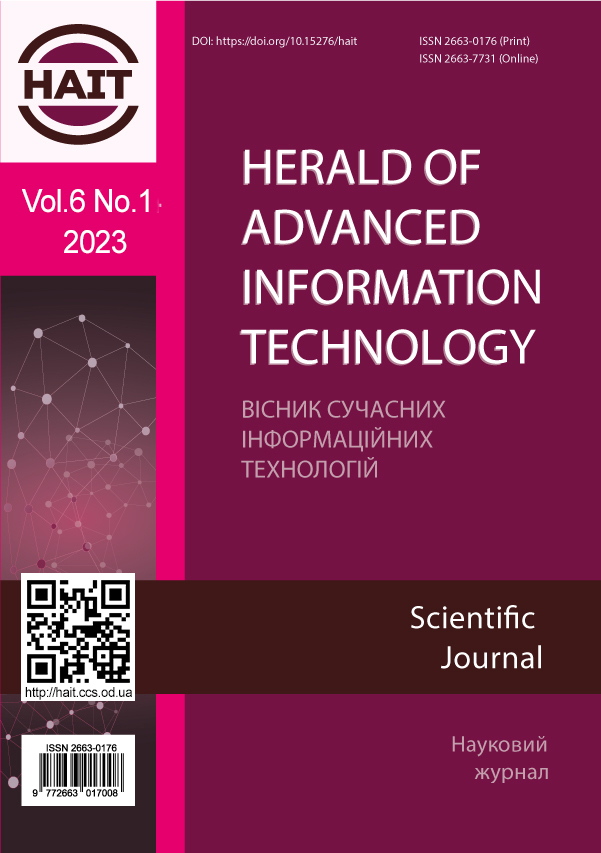Gait recognition methods in the task of biometric human identification
Main Article Content
Abstract
This article focuses on defining the problem of solving the problem of human identification by means of gait recognition in biometric identification systems. In order to determine the prospects of using gait recognition methods for human identification, a generalized model of a biometric identification system was considered, the main modules of the system were identified and a brief description of each module was provided. Next, the basic requirements for human biometric features were identified, the main biometric features were considered, and the features of their use in biometric identification systems were determined. The issue of using gait as a biometric identifier was also considered. It has been determined that the use of human gait allows to get rid of two main obstacles in the construction of biometric identification systems: users are not required to provide personal biometric information in advance, and the system does not require specialized equipment. Also, the issue of multi-view gait recognition was considered. Multi-view gait recognition involves capturing gait data from different angles and using this data to improve recognition accuracy. This approach has shown great promise in challenging scenarios such as low lighting conditions. Next, we analyzed scientific works in the field of gait recognition. It was determined that gait recognition methods can be divided into template-based and non-template-based methods. Template-based methods are aimed at obtaining patterns of torso or leg movements, i.e. they usually focus on the dynamics of movement in space or on spatio-temporal methods. Non-template-based methods consider shape and its features as more relevant characteristics, i.e., human recognition are performed using measurements that reflect the shape of the person. Next, we consider the use of different datasets in the process of training and testing human gait recognition methods. The main datasets were identified and their characteristics and features were collected. We considered the presence of various characteristics in the datasets, as well as the means of representing information about human gait. The research has identified the main problems and challenges facing researchers in this area, as well as the main trends in the field of human gait recognition in biometric identification systems.



